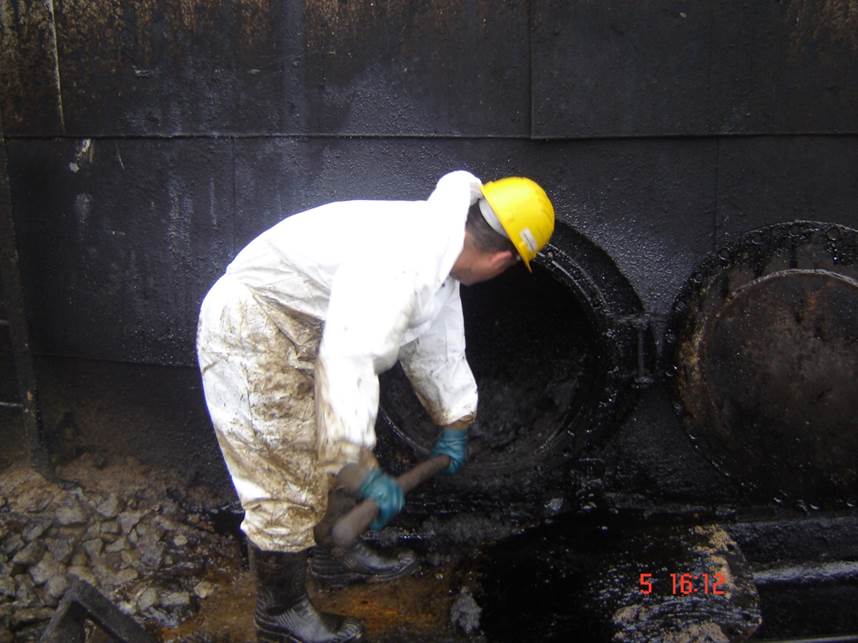Comparison between S.R.S.® and manual operations
S.R.S.® VS. MANUAL CLEANING
SAFETY
S.R.S.® Technology
S.R.S.® technology complies with EC safety regulations, according to which a device must reduce the risk at the origin.
The S.R.S.® eliminates all risks, as operators are not exposed to flammable atmospheres nor to toxic gases, that always present inside a tank.
The S.R.S.® Technology substitutes a hazardous procedure with a non‐hazardous one.
It eliminates the need to use personal protection devices prescribed by technical specifications in case of manual operations.
The S.R.S.® Technology reduces to zero the number of operators that may be exposed to risks:
- Operators enter the tank only when inside there is no risk, i.e. when the internal atmosphere is breathable
- Operators do not undergo to any fire risk.
Manual Cleaning Method
Manual Cleaning method does not conform to EC safety regulations.
Choosing manual cleaning system may be subject to civil and/or penal liability.
Operators enter the tank since the very beginning of the cleaning operations, in the following conditions:
- the internal atmosphere is toxic;
- flammable/explosive conditions are easily generated;
- breathing devices or external air‐feedingsystem masks are necessary.
Working inside the tank is difficult and safety is drastically reduced due to the need of airfeeding masks.
Fire risks may occur in any stage of cleaning operations.
ENVIRONMENT
S.R.S.® Technology
- S.R.S.® operations requires half of the time than manual operations;
- The hydrocarbon recovery percentage (>98%) allows a cost recovery higher than with any other system;
- Cost of solid material disposal is minimized;
- Cost for water treatment is negligible;
Thanks to the high percentage of recovered material, the total cost of operations becomes an
INCOME
Manual Cleaning Method
- Operations last double the time of S.R.S.® operations;
- Whatever treatment is used after the sludge is taken out from the tank, hydrocarbon recovery is lower than 70 %;
- Quantity and cost of solid material treatment and disposal are very high;
- Cost of water and relevant waste treatment may be very high;
Due to the poor performances, conventional cleaning methods implies always
HIGH COSTS
COSTS
S.R.S.® Technology
- S.R.S.® technology operates in a closed cycle: that means no emission to the external atmosphere;
- Disposal is limited to the inert portion with a very limited quantity of hydrocarbon and water;
- The quantity of water needed in the process is drastically reduced.
Manual Cleaning Method
- Constant emission of hydrocarbon vapors during the whole operation;
- The part to be disposed is 20% higher than the original sludge;
- Large quantities of water needed, that must be afterward treated.
![S.R.S.® [Sludge Recovery System]](https://sludgerecoverysystem.com/wp-content/uploads/2020/06/logo-trasparente-bianco.png)
![S.R.S.® [Sludge Recovery System]](https://sludgerecoverysystem.com/wp-content/uploads/2020/06/logo-trasparente.png)


